Boosting the seed business through management training in Rwanda
One of the major factors contributing to low national average maize yield in Rwanda is small-scale farmers’ limited access to improved maize seed, as was stated by Claver Ngaboyisonga (Crop Research and Extension at Rwanda Agricultural Board (RAB) director), Nyiringabo Ignace (Win Win Agri-tech Ltd director), and Ngoga Claudien (Agriculture Promotion – Sarura Seed Company director) during a Seed Business Management training organized by Win Win Agritech Ltd and CIMMYT from 4 to 6 September 2012 at the Pastoral Centre in Kigali, Rwanda. The training aimed to increase awareness on quality seed production and marketing, and to improve the skills and knowledge among new small seed companies, as quality seed production and marketing are challenges the sector is yet to overcome.
Maize cultivation in Rwanda is rapidly expanding due to changes in cropping systems, agricultural policies, and use of inputs such as fertilizer and new maize varieties adapted to different agro-ecologies. However, the national average yield remains low at 2.4 t/ha, despite the increase in area under maize cultivation from 109,400 ha in 2005 to 223,414 ha in 2011 and in production from 97,251 t in 2005 to 525,679 t in 2011. According to Ngaboyisonga, public-private partnership and involvement of private seed companies in seed production and marketing of quality improved seed is crucial for increasing the national average yield.
To achieve this goal, 28 participants from Win Win Agri-tech Ltd, Agriculture Promotion Company Ltd- Sarura, and RAB participated in the training program covering all aspects of the seed business, spanning from variety identification to marketing. The sessions were coordinated by CIMMYT seed systems specialists Mosisa Worku Regasa and James Gethi. Maereka Enock Kuziwa, a course participant, expressed satisfaction with the way the program was organized and conducted. “Seed business is a relatively new field in the Rwandan market and continuing support from CIMMYT to the seed business industry in Rwanda would be very useful,” added Ignace. This training will go a long way in promoting the use of improved maize varieties, especially those developed by CIMMYT in collaboration with RAB.
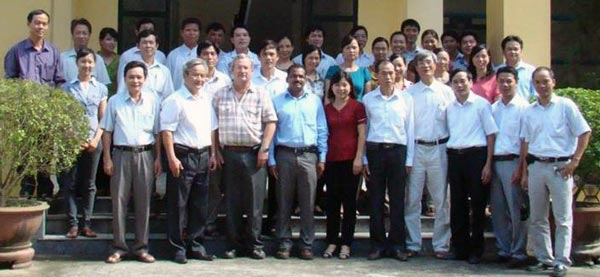
 The Hill Maize Research Project (
The Hill Maize Research Project (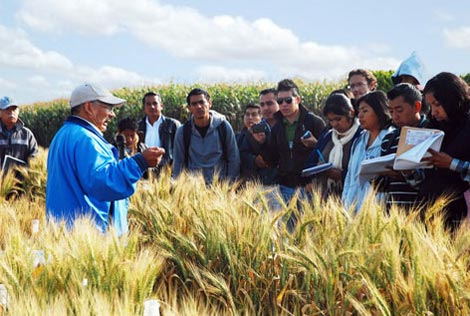 On 21 September 2012, CIMMYT-El Batán opened its doors to 280 students, accompanied by their professors, from 14 Mexican universities for the 6th “Open Door” event. This year, students visited the wheat and maize programs, conservation agriculture demonstration plots, the germplasm bank, and biotechnology and cereal laboratories.
On 21 September 2012, CIMMYT-El Batán opened its doors to 280 students, accompanied by their professors, from 14 Mexican universities for the 6th “Open Door” event. This year, students visited the wheat and maize programs, conservation agriculture demonstration plots, the germplasm bank, and biotechnology and cereal laboratories.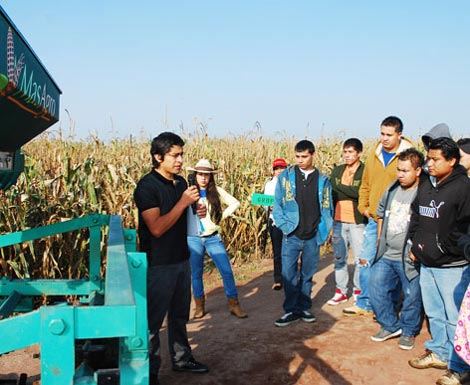 Ma. de Lourdes de la Isla, emeritus researcher and professor at Colegio de Postgraduados (CP), sent a thank-you letter to the CIMMYT Training Office, saying the event“provided a very valuable source of knowledge.” She also praised the professionalism of the organizers and presenters. Special thanks to all the presenters, and to Daniela Flores Castillo and Norma Hernández for coordinating the logistics.
Ma. de Lourdes de la Isla, emeritus researcher and professor at Colegio de Postgraduados (CP), sent a thank-you letter to the CIMMYT Training Office, saying the event“provided a very valuable source of knowledge.” She also praised the professionalism of the organizers and presenters. Special thanks to all the presenters, and to Daniela Flores Castillo and Norma Hernández for coordinating the logistics.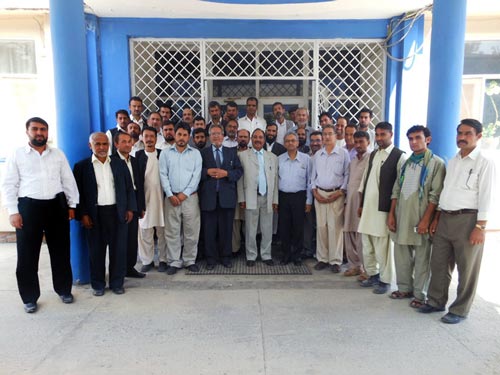
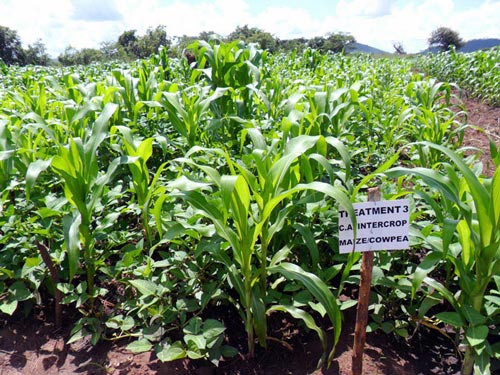 To reduce farm labor, improve soil productivity and crop yields, and contribute towards food security of farming households in the changing climate environment, CIMMYT, the
To reduce farm labor, improve soil productivity and crop yields, and contribute towards food security of farming households in the changing climate environment, CIMMYT, the 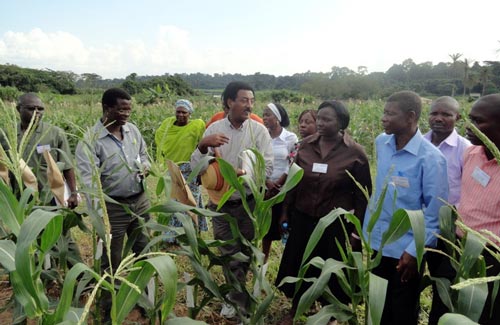 Having experienced CA, both Tembo and Zulu hope that more farmers will adopt the practice. “This project should continue so that others can learn from us that we do things differently now,” she added. Learning about CA has enabled Tembo to lessen the challenges her family faces, especially the tedious labor in preparing the field. Zulu is proud to see that other farmers admire what they see on his farm.
Having experienced CA, both Tembo and Zulu hope that more farmers will adopt the practice. “This project should continue so that others can learn from us that we do things differently now,” she added. Learning about CA has enabled Tembo to lessen the challenges her family faces, especially the tedious labor in preparing the field. Zulu is proud to see that other farmers admire what they see on his farm.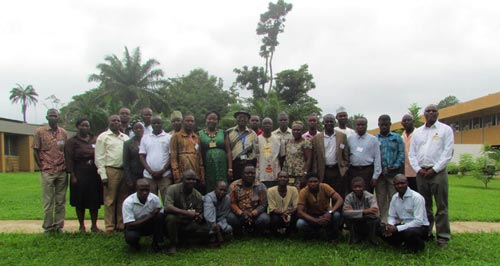
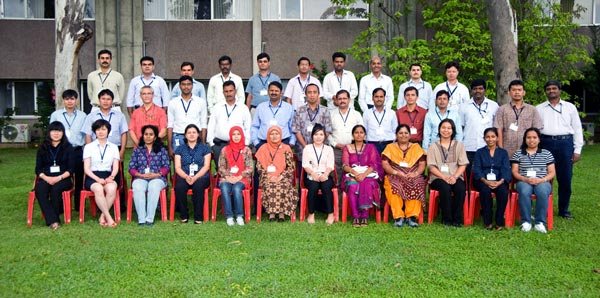
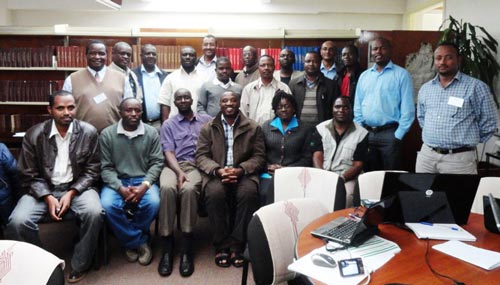 The fourth workshop on monitoring and evaluation (M&E) organized by the
The fourth workshop on monitoring and evaluation (M&E) organized by the 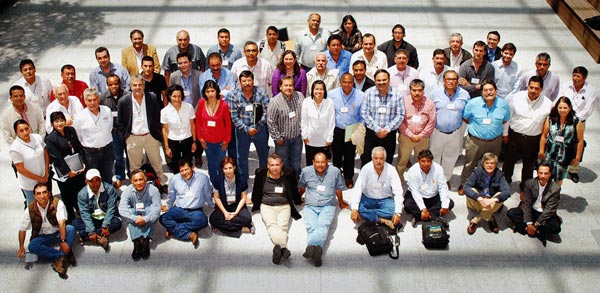
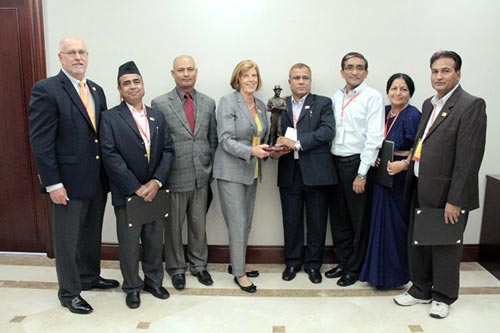 The first-ever
The first-ever 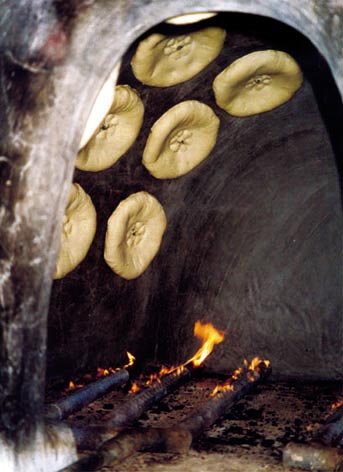 The 11th International Gluten Workshop (IGW) jointly organized by the Chinese Academy of Agricultural Sciences (CAAS),
The 11th International Gluten Workshop (IGW) jointly organized by the Chinese Academy of Agricultural Sciences (CAAS), 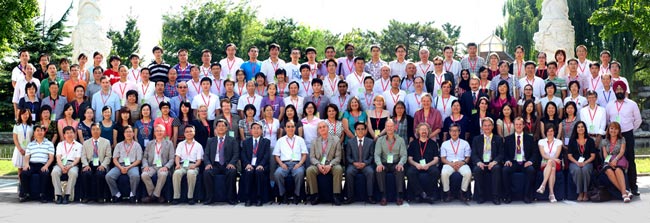
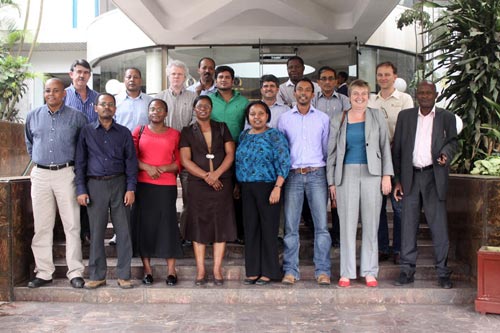 15 staff members from the
15 staff members from the 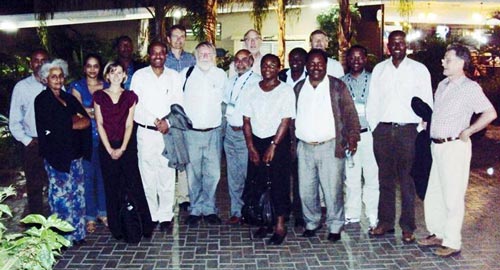 A team of scientists from CIMMYT’s socioeconomics program participated in the 28th triennial International Conference of Agricultural Economists (ICAE) in Foz do Iguaçu, Brazil, during 18-24 August 2012. ICAE, which is considered the key platform for the preservation of international agricultural and development economics research, brought together over 700 researchers and provided an opportunity to share new research ideas, methods, and tools.
A team of scientists from CIMMYT’s socioeconomics program participated in the 28th triennial International Conference of Agricultural Economists (ICAE) in Foz do Iguaçu, Brazil, during 18-24 August 2012. ICAE, which is considered the key platform for the preservation of international agricultural and development economics research, brought together over 700 researchers and provided an opportunity to share new research ideas, methods, and tools.